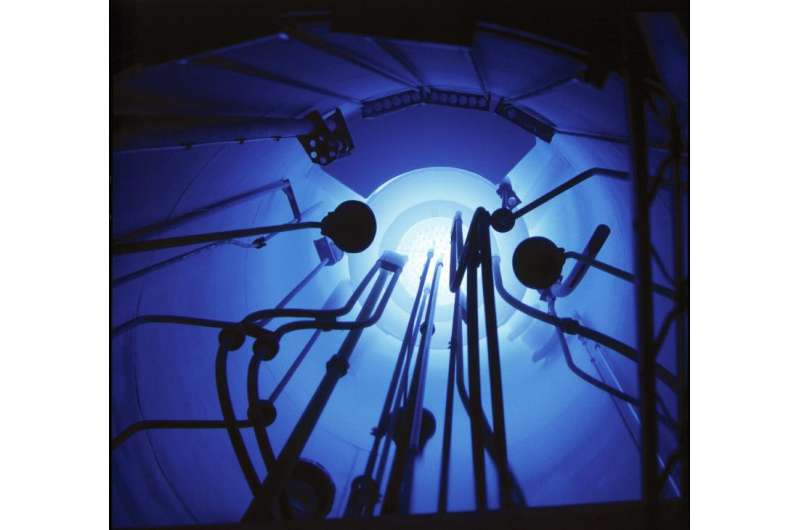TRIGA Mainz reaches world record of 20,000 pulses in 50 years

The research reactor TRIGA at Johannes Gutenberg University Mainz (JGU) has reached a new milestone: after 50 years of consecutive operation, TRIGA Mainz achieved a total number of 20,000 pulses on October 1, 2015 - a world record. On this day, the reactor was operated for test measurements of neutron detectors that will be used at the source for ultracold neutrons as part of the user facility at the PRISMA Cluster of Excellence at Mainz University.
TRIGA Mainz has a powerful neutron source, which is used by chemists and physicists from all over the world for fundamental research. It can be operated in the steady-state mode with a maximum thermal power of 100 kilowatt or in the pulsed mode with a maximum thermal power of 250,000 kilowatt, released within 30 milliseconds. This produces the characteristic blue glow of underwater Cherenkov radiation, which was emitted during 20,000 pulses in the TRIGA reactor pool.
According to General Atomic, the company that developed the TRIGA reactor concept, no other TRIGA reactor was pulsed more often. The International Atomic Energy Agency (IAEO) currently counts 35 running TRIGA reactors in 16 countries, 20 of these reactors can be pulsed.
Provided by Universitaet Mainz



















